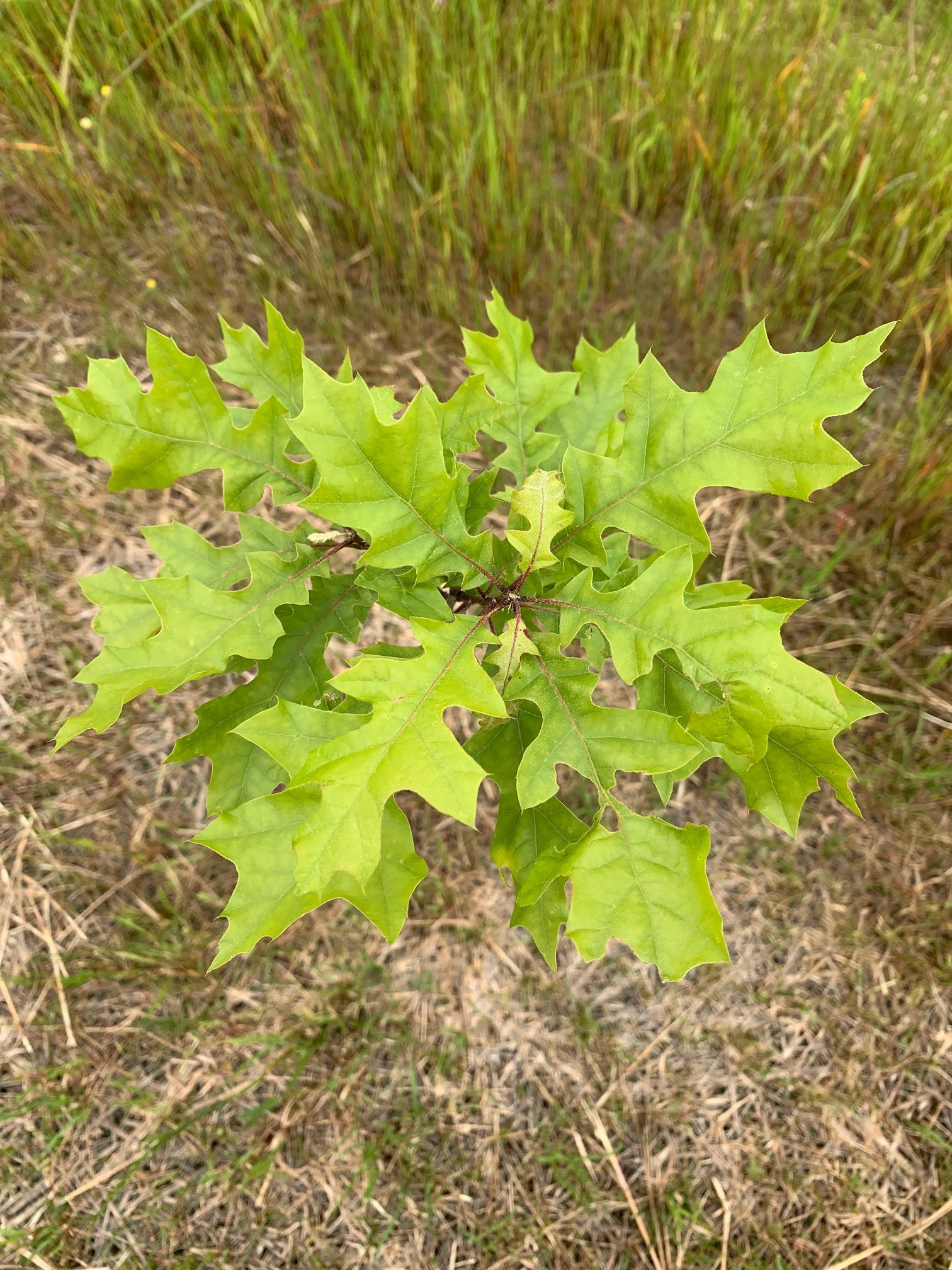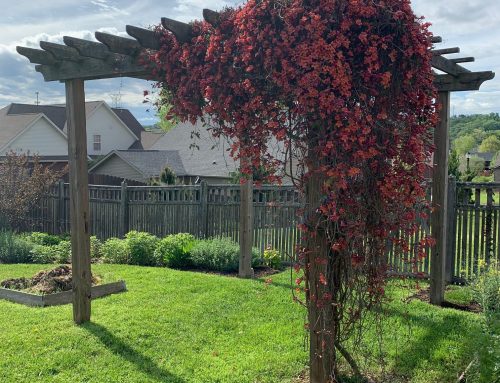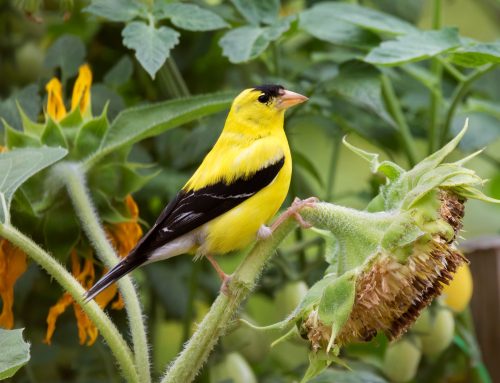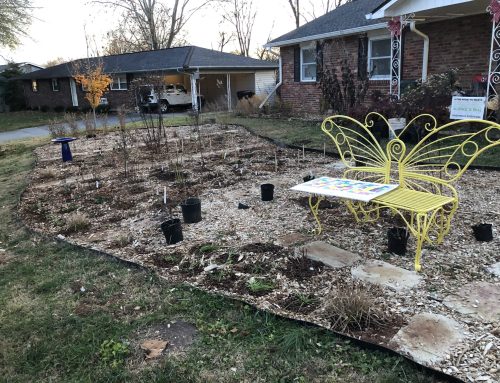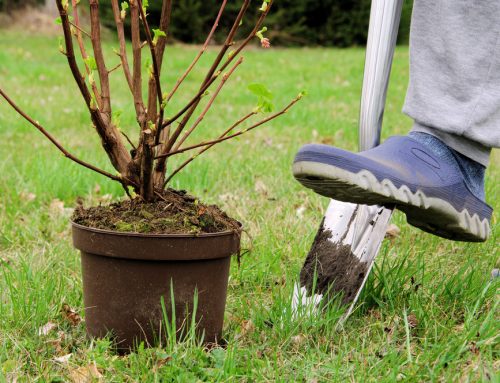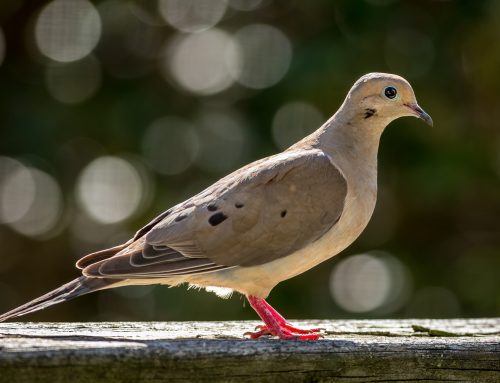by Karin Beuerlein
What if you could expand your reach and make your backyard bird habitat even bigger and richer? That doesn’t necessarily mean buying more land—it can just mean convincing your neighborhood to add a natural area.
Last September, the open land above my subdivision was finally sold, and the earth-moving equipment came for the last of the ancient oaks that grew there. To sum up, it was traumatic for humans and wildlife alike.
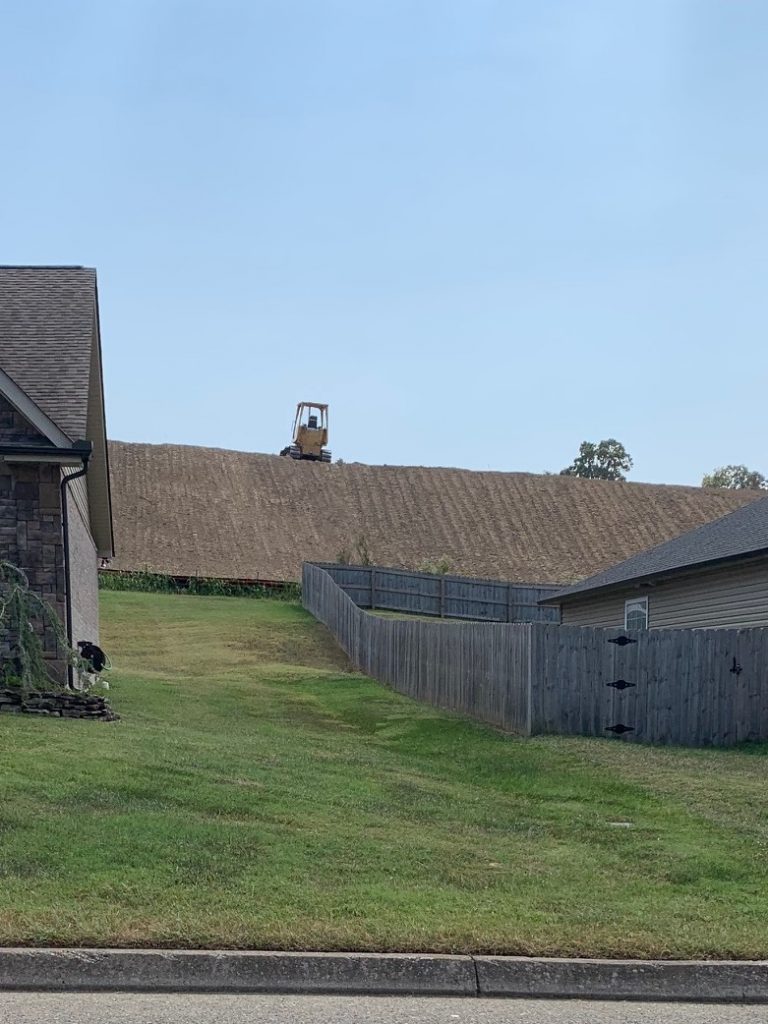
But the neighbors whose houses backed up to that land had a bigger problem, literally: a tall, steep artificial hill was suddenly pushed up behind them to make a flat site for new homes. The sight was a shock at first, especially to neighbors whose bedroom windows now directly faced an earth wall instead of a meadow dotted with trees.
But that got me thinking. The hill was sodded right away, but it was so steep it couldn’t possibly be safe to mow. We needed a buffer between our neighborhood and the new housing development—and the birds that were displaced needed food and shelter.
A Proposal
I pitched the developer an idea: restoring woodland to that acre and a half.
For the neighborhood, it would mean beauty, privacy, shade, sound buffering, and the elimination of 20 lawnmowers running above our heads at all hours. For the birds and other creatures left homeless, these young woods would be a place to start over. Early forest habitat is a rich breeding ground for all kinds of amazing species. And ground-nesting birds might temporarily take advantage of grass left uncut.
To my surprise, I got the green light to organize the project.
Was the process easy? Not exactly. Finding an expert to talk to was challenging, although I eventually got connected with Knoxville’s urban forester, Kasey Krouse, who gave me excellent advice. Kasey graciously helped me choose trees from the Tennessee state nursery’s available stock that could handle the tough conditions—compacted soil, no water retention, and zero TLC.
Our plant palette:
- Shortleaf pine—70% of our planting, because falling needles deter exotic invasive plants like honeysuckle and privet. Drought-tolerant, and resistant to both ice damage and disease. Hosts 200+ species of caterpillars for birds.*
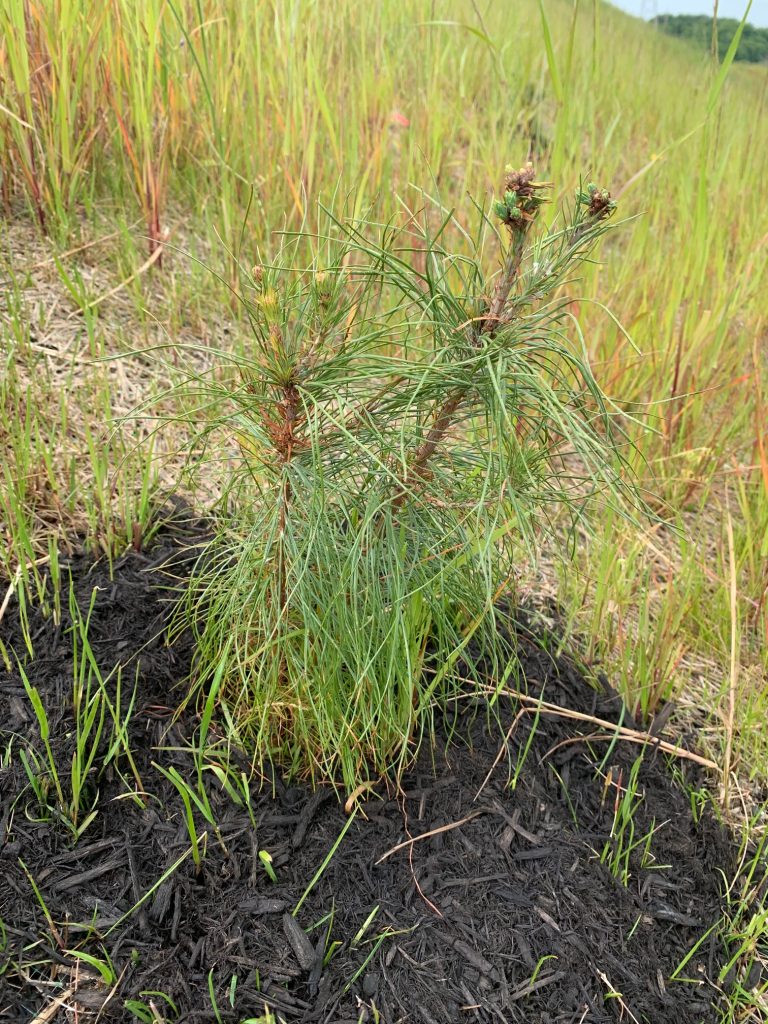
- Northern red oak—drought-tolerant, with a deep and tenacious root system. Hosts hundreds of species of butterflies, moths, and other insects. Provides nest sites and acorns for wildlife.
- Persimmon—drought-tolerant, with a deep taproot; colonizes, which helps repel invasives. Hosts 46 species of caterpillars, and fruits are an important food source for migrating birds in the fall.
- Shining sumac—also colonizes readily and provides erosion control. Hosts several species of caterpillars; offers nest sites, shelter, and fruits for many bird species.
We’ll likely add a few more varieties in the fall to replace trees that don’t survive.
Because COVID-19 scattered our original team of volunteers, my husband and I planted about 500 of the 800 trees ourselves over the course of a week, though we got relief from a scrappy group of helpers on the last day. (Thanks again, guys.) That was technically doable for two determined people, but not an approach I recommend. If this is a project you’d like to undertake, make sure you have enough bodies to get the job done!
The spring weather was kind, and the trees got a solid start in their new home. Watching their progress, it’s exciting to think about the birds that might nest and visit here now that food will be abundant. Several of the oak seedlings already have holes in their leaves, signs that insects are finding what they need even at this early stage.
How to Get Your Tree-Planting Project Off the Ground
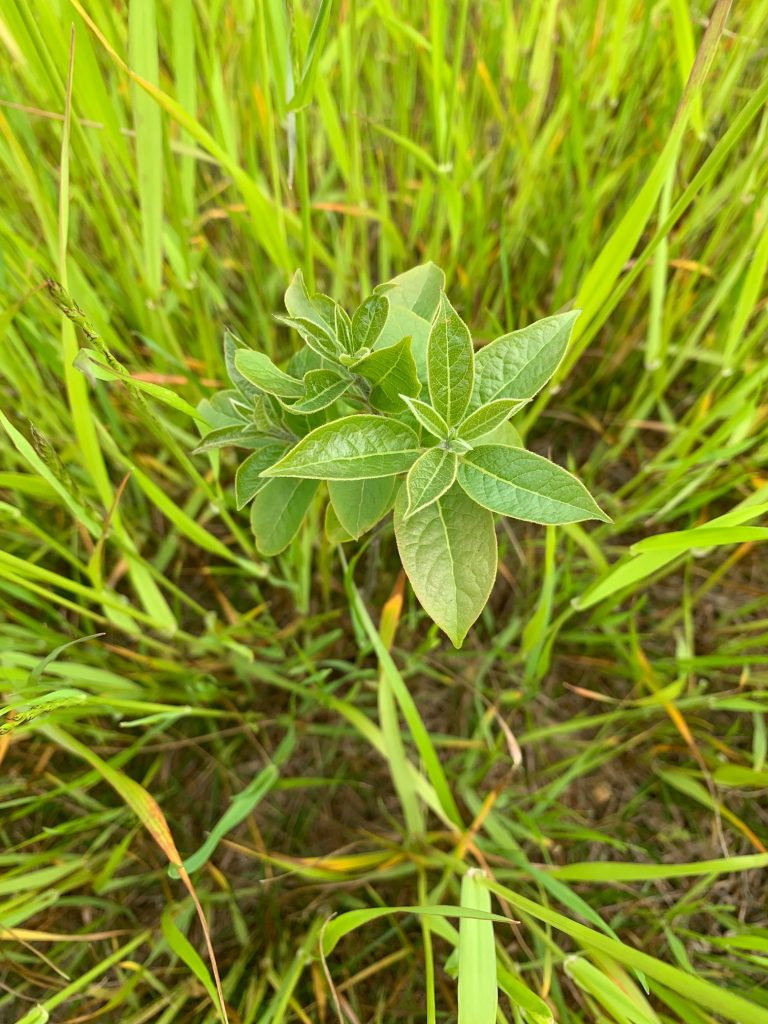
First, read. These two resources are immensely helpful for planning:
The Woods in Your Backyard: Learning to Create and Enhance Natural Areas Around Your Home (Kays et. al., Cornell University). Covers all aspects of putting together (and pricing!) a woodland restoration.
Wildflowers and Plant Communities of the Southern Appalachian Mountains & Piedmont: A Naturalist’s Guide to the Carolinas, Virginia, Tennessee, and Georgia (Timothy P. Spira, UNC Press). Helps you understand which trees occur together in natural plant communities found on sites like the one you intend to cover.
Before you order trees, try to find a forester or restoration specialist to consult with you on the needs of your site. The state of Tennessee employs both area foresters and urban foresters, and your city may also have an urban forester who can approve your planting list. Be persistent; state and city staff stay busy and can be hard to reach.
Hot Tips
- Plan early. To get the best tree selection from the Tennessee state nursery (which makes large-scale plantings affordable), order well before the winter planting months.
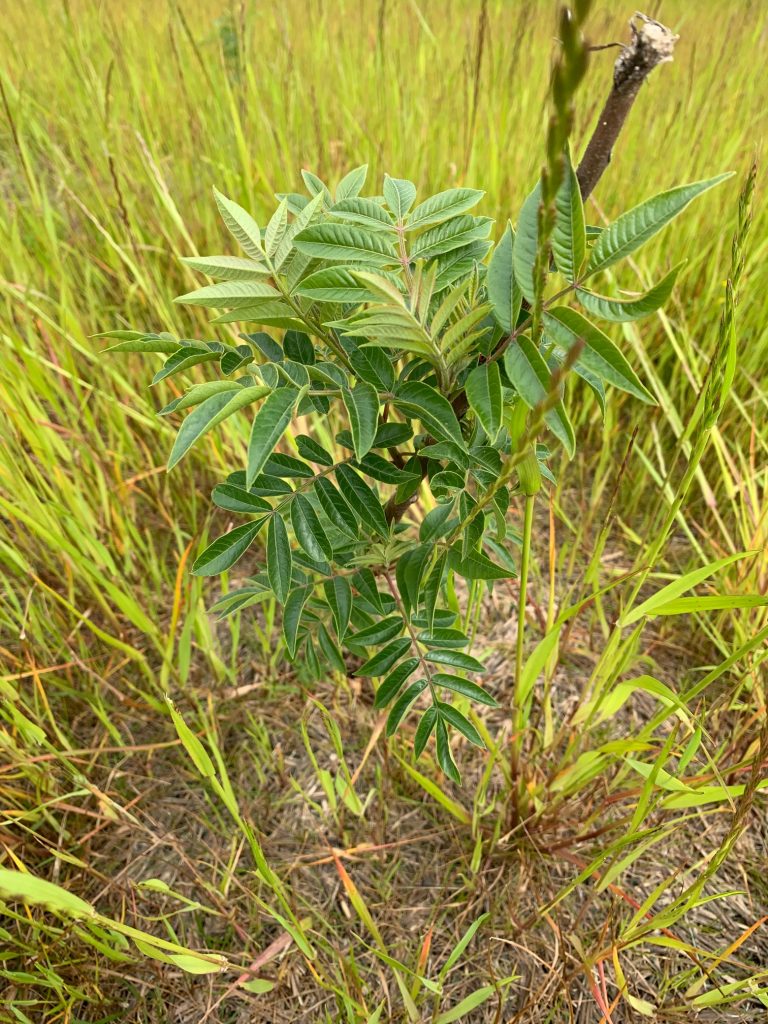
- Plan based on real plant communities. Don’t choose trees randomly—figure out what trees are in the forest community you want to emulate based on your site conditions.
- Plant early. January through March is your window if you’re ordering from the state, and earlier is better, because 65 degrees is the upper limit for feasible planting weather when it comes to bareroot trees.
- Plant close together. We planted on eight-foot centers. This deters invasives, and trees planted closely develop interlocking root systems that are much more stable than lone trees. (Remember this when you plant trees in your yard as well.)
- Plant in rows. Makes it easier to monitor mortality and order replacements. Tiny trees are reeeeeeally hard to find in a sea of tall grass.
- Enlist volunteers. Learn how to plant bareroot trees (here’s a helpful guide) and be ready to train your people on planting day.
Think On It
Is there a forgotten space near you that could be perfectly good bird habitat, given a little attention? Would you be willing to go out of your comfort zone to influence a planting project that could make a difference in your neighborhood, or at your church or your school?
If so, ordering from the state nursery for the coming planting season starts September 1. Be ready!
*Note: All information about caterpillars sourced from the books Bringing Nature Home and Nature’s Best Hope, both by Doug Tallamy. Top image: an enthusiastic northern red oak seedling, May 2020. All images by Karin Beuerlein.
